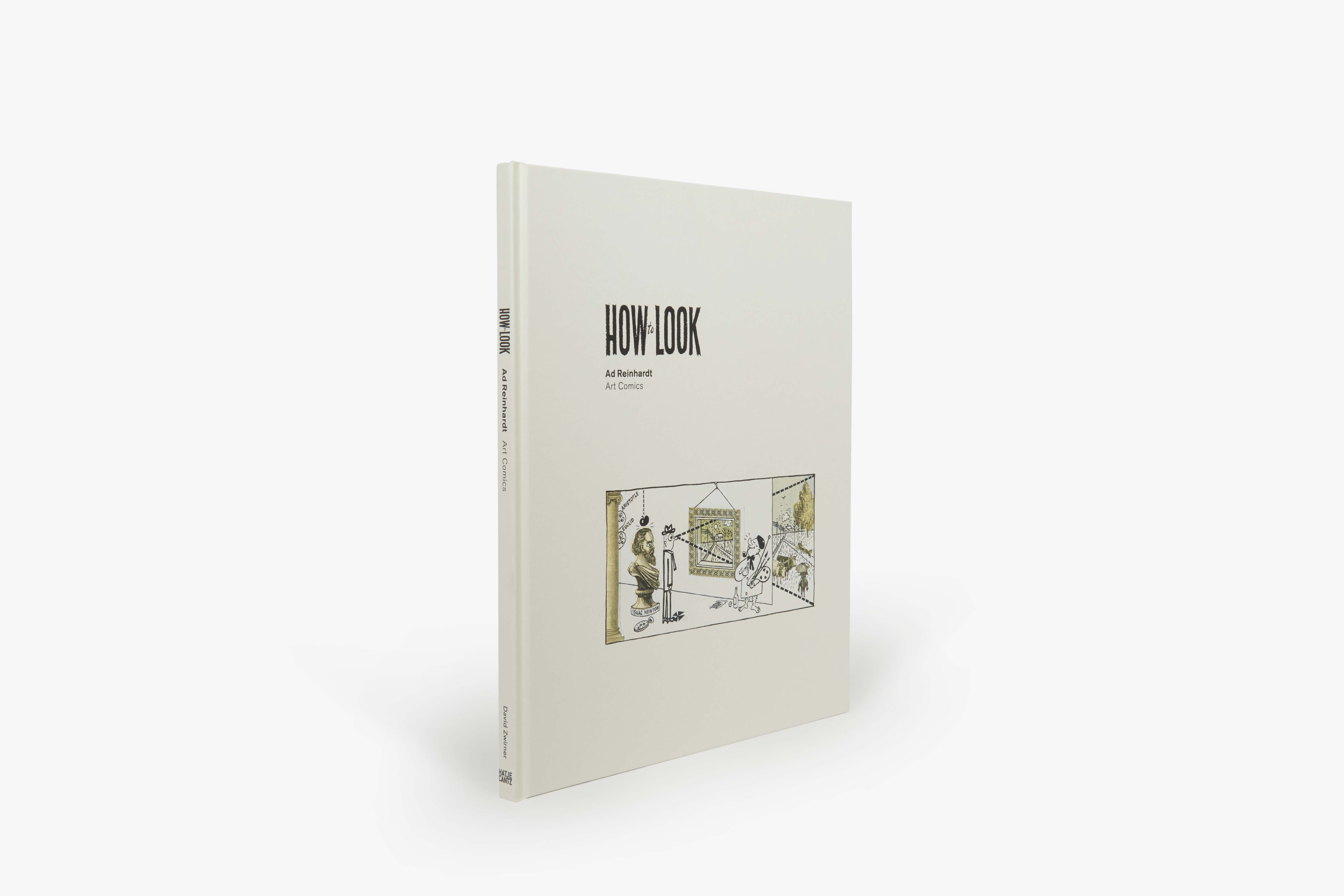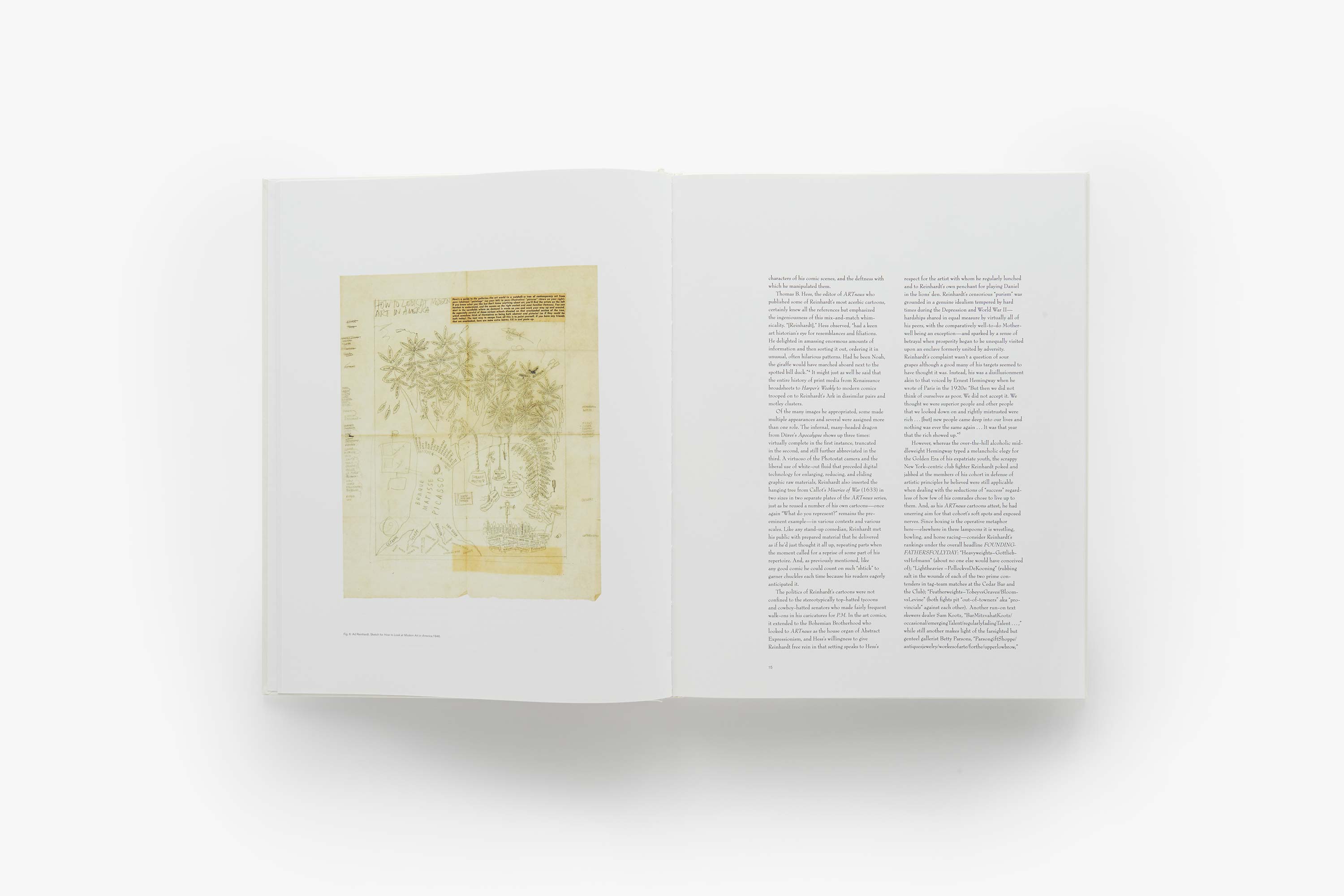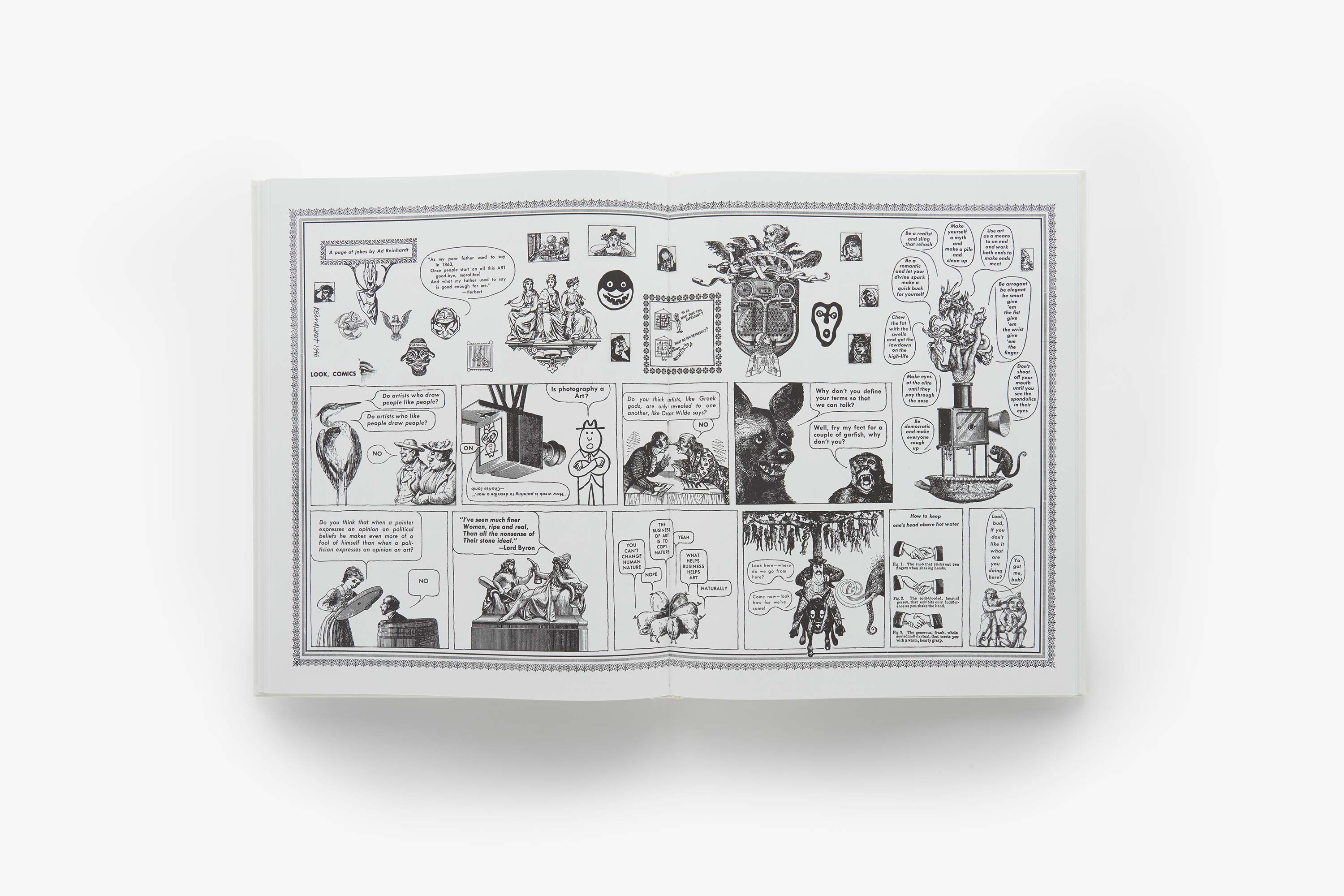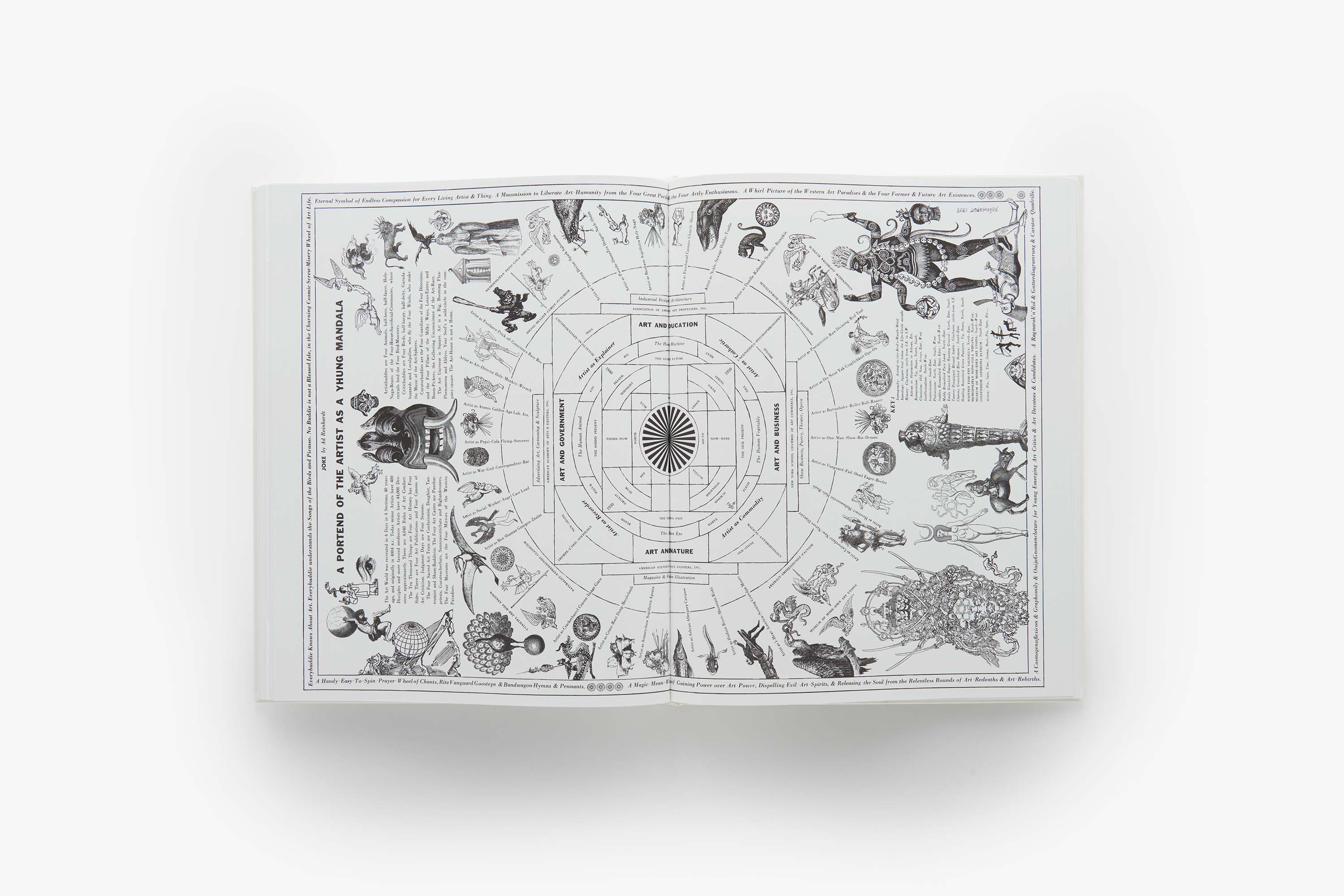Ad Reinhardt: How to Look
Art Comics
Text by Robert Storr
In February 1943, the progressive newspaper PM hired Ad Reinhardt as its staff artist and, in January 1946, Reinhardt embarked on his most ambitious illustration project—the notable “How to Look” series, in which his cartoons and collages transformed from small, supplemental illustrations, to complex, ironic, and pithy art-historical lessons always articulated with a keenly critical eye and a wry sense of humor that remains relevant today. In addition to showing Reinhardt’s complete “How to Look” series, this catalogue, which was published on the occasion of the 2013 exhibition at David Zwirner in New York, also includes the artist’s ever-relevant biting, satirical critiques of the contemporary art world later published in such periodicals as Critique, tran/sformation, Art d’aujourd’hui, and ARTnews. As Dan Nadel notes in his review of the exhibition, “Reinhardt winkingly guides viewers through art as he knew it. Along the way there are many now-forgotten artists, critics, curators and galleries, and many still known. But trace-the-reference is only part of the fun. The elegance of Reinhardt’s compositions, the deftness with which he juxtaposes text and image, and his infrequent, but jarring use of hand-drawn cartooning make each strip a gem.”
Introducing new scholarship on this facet of Reinhardt’s career by curator Robert Storr, the publication includes large, black-and-white plates of the artist’s art comics, including the “How to Look” series in its entirety. Storr lists a handful of Reinhardt’s contemporaries who were, like the artist himself, successfully employed as illustrators in the 1930s, 1940s, and1950s, from Philip Guston to Saul Steinberg—but among them, he declares, only Reinhardt managed to “transform that bread-and-butter occupation into a full-fledged but at the same time separate dimension of his larger aesthetic enterprise.” From “How to Look at Iconography,” printed with a telling disclaimer that the editors’ views “do not necessarily reflect those of the author of this page,” to “How to Look at Art and Industry,” accompanied by passionate cautions against the danger of market obsession, these pages bring to life Reinhardt’s inimitable spirit for provocation and thoughtful critique. They exist as a testament to his legacy as one of the most important artists of the twentieth century, and his comics continue to resonate as important examples of astute political, cultural, and social commentary.
Publisher: David Zwirner/Hatje Cantz
Artists: Ad Reinhardt
Contributors: Robert Storr
Designer: David Chickey, Skolkin/Chickey
Printer: Offsetdruckerei Karl Grammlich GmbH
Publication Date: 2013
Binding: Hardcover
Dimensions: 11.25 × 14.25 in | 28.7 × 36.2 cm
Pages: 92
Reproductions: 43
ISBN: 9783775737685
Retail: $35 | £24 | €33
Status: Not Available
Ad Reinhardt
Ad Reinhardt (1913-1967) was one of the most significant American artists of the twentieth century. He was included in many important museum exhibitions during his lifetime, including Abstract and Surrealist Art in the United States (1944), Cincinnati Art Museum; Abstract Painting and Sculpture in America (1951–52), Americans 1963 (1963–64), and The Responsive Eye (1965–66), The Museum of Modern Art, New York; The New Decade: 35 American Painters and Sculptors (1955–56), Whitney Museum of American Art, New York; Abstract Expressionists Imagists (1961), Solomon R. Guggenheim Museum, New York; Painting and Sculpture of a Decade: 1954–64 (1964), Tate Gallery, London; and Black, White and Grey (1964), Wadsworth Atheneum, Hartford, Connecticut; among others. At the end of 1966, Sam Hunter, with the assistance of Lucy Lippard, mounted a major retrospective of Reinhardt’s work at The Jewish Museum, New York.
Robert Storr
Robert Storr is an American artist, critic, and educator who was a curator, and then senior curator, of The Museum of Modern Art’s Department of Painting and Sculpture from 1990 to 2002 and from 2005 to 2007. He served as the first American-born director of the Venice Biennale. From 2002 to 2006, he was the Rosalie Solow Professor of Modern Art at the Institute of Fine Arts, New York University, and then dean of the Yale School of Art from 2006 to 2016, where he remains as a professor of painting and printmaking. The exhibition he organized at David Zwirner in 2013 to celebrate the centenary of Ad Reinhardt was voted “Best Show in a Commercial Space in New York” by the US Art Critics Association.






